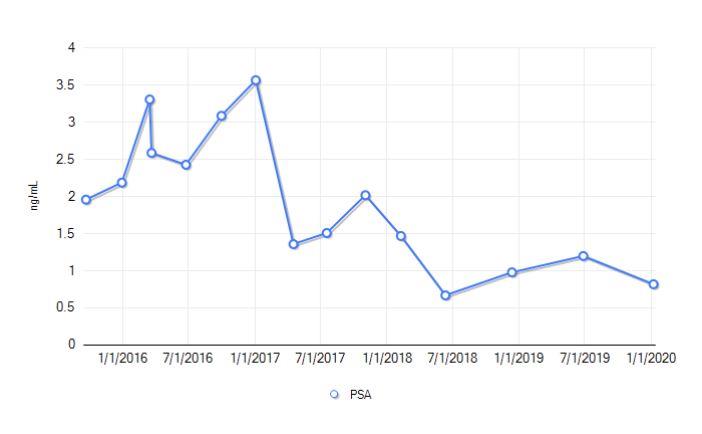Hi All!
Hi especially to Tall-Allen. I've been wondering where to find you! 
So the long and short of it is that my husband had HDR mono 5 years ago at UCLA. He was 8 out of 20 positive, with 2 of the 8 being 3+4 and the rest 3+3. Since that time we have had a very bumpy ride as you can see from the graph below. Thus far his nadir is .67, with the latest being .82. I would love to see this <0.5. Any thoughts on these numbers? I would love to hear what you think!
Yours,
Mary
